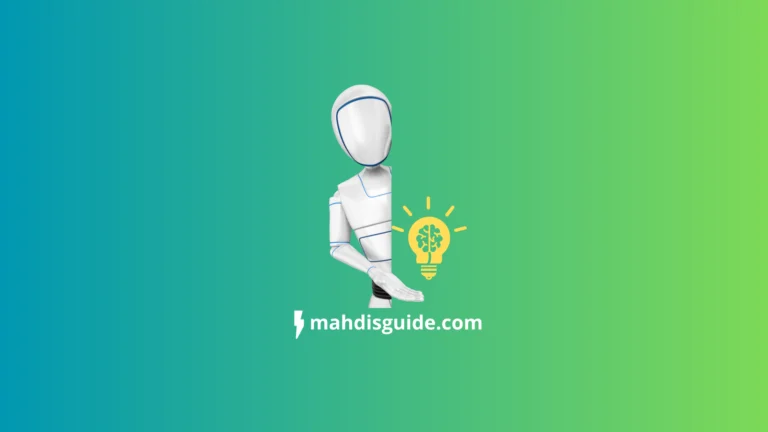Demystifying Machine Learning: A Beginner’s Guide to AI Concepts
Introduction
Within the context of the current technological landscape, the terms “machine learning” (ML) and “artificial intelligence” (AI) have become extremely commonplace. However, for those who are just starting out, these ideas may appear intimidating and difficult to comprehend. By giving a roadmap that is accessible to novices, this article intends to demystify the world of machine learning and provide an introduction to the essential principles that constitute the foundation of artificial intelligence.

Understanding Artificial Intelligence
Defining Artificial Intelligence
Artificial Intelligence refers to the development of computer systems that can perform tasks that typically require human intelligence. These tasks include speech recognition, visual perception, language translation, decision-making, and more. AI can be classified into two categories: Narrow AI, designed for a specific task, and General AI, which possesses the ability to understand, learn, and apply knowledge across diverse domains.
Machine Learning: The Engine of AI
At the heart of AI lies Machine Learning, a subset of AI that focuses on enabling machines to learn from data. Unlike traditional programming, where explicit instructions are provided, Machine Learning algorithms learn patterns from data and make predictions or decisions without being explicitly programmed.
Key Concepts of Machine Learning

1. Data and Features
The foundation of any Machine Learning model is data. Data serves as the input from which the model learns and makes predictions. Features are specific characteristics or attributes within the data that the model uses for learning. For example, in a spam email classifier, features could include the frequency of certain words or the presence of specific phrases.
2. Labels and Supervised Learning
In supervised learning, the algorithm is trained on a labeled dataset. Labels are the desired output or the correct answer associated with each input. The model learns to map inputs to outputs by identifying patterns in the labeled data. This type of learning is commonly used in tasks like image recognition, where the model is trained on a dataset of images with corresponding labels.
3. Unsupervised Learning and Clustering
Unsupervised learning involves training a model on an unlabeled dataset. The algorithm must find patterns and relationships within the data without explicit guidance. Clustering is a common unsupervised learning technique where the algorithm groups similar data points together. An example is customer segmentation based on purchasing behavior.
4. Training and Testing Data
To evaluate the performance of a Machine Learning model, the dataset is often divided into two parts: training data and testing data. The model is trained on the training data, and its performance is then assessed on the testing data, providing insights into its generalization capabilities.
5. Overfitting and Underfitting
Overfitting occurs when a model learns the training data too well, capturing noise and irrelevant patterns that don’t generalize to new, unseen data. On the other hand, underfitting happens when a model is too simple and cannot capture the underlying patterns in the data. Balancing between these extremes is crucial for creating a robust and accurate model.
6. Validation Sets
To further fine-tune a model and prevent overfitting, a validation set is often used during the training process. The model is trained on the training set, evaluated on the validation set, and adjusted accordingly. This iterative process helps in optimizing the model’s performance.
Types of Machine Learning
1. Supervised Learning
Supervised learning involves training a model on a labeled dataset, where the algorithm learns to map inputs to outputs. This type is widely used in classification and regression tasks, such as predicting house prices or identifying spam emails.
2. Unsupervised Learning
Unsupervised learning deals with unlabeled data, focusing on finding patterns or structures within the dataset. Clustering and dimensionality reduction are common unsupervised learning techniques, aiding in data exploration and understanding.
3. Reinforcement Learning
Reinforcement learning involves training a model to make sequences of decisions by providing feedback in the form of rewards or penalties. This type of learning is prevalent in gaming, robotics, and autonomous systems.
Machine Learning Algorithms
1. Linear Regression
Linear regression is a simple yet powerful algorithm used for predicting a continuous variable. It establishes a linear relationship between the input features and the output.
2. Decision Trees
Decision trees are tree-like structures that break down a dataset into smaller subsets based on the most significant features. They are commonly used in classification tasks.
3. Neural Networks
Inspired by the human brain, neural networks consist of interconnected nodes, or neurons, organized in layers. Deep Learning, a subset of Machine Learning, utilizes neural networks with multiple layers to learn intricate patterns.
4. Support Vector Machines (SVM)
SVM is a versatile algorithm used for both classification and regression tasks. It works by finding a hyperplane that best separates different classes in the feature space.
5. K-Nearest Neighbors (KNN)
KNN is a simple and intuitive algorithm used for classification and regression. It classifies a data point based on the majority class of its k-nearest neighbors in the feature space.
The Future of Machine Learning
1. Explainable AI (XAI)
As AI systems become more complex, there is a growing need for transparency and interpretability. Explainable AI aims to develop models that can provide clear explanations for their decisions, increasing trust and understanding.
2. Transfer Learning
Transfer learning involves training a model on one task and applying the learned knowledge to another related task. This approach accelerates the training process and enhances performance, especially when labeled data is scarce.
3. Automated Machine Learning (AutoML)
Automated Machine Learning seeks to automate the end-to-end process of applying Machine Learning to real-world problems. This includes automating feature engineering, algorithm selection, and hyperparameter tuning, making ML more accessible to non-experts.
Conclusion
Machine Learning, though complex, becomes more accessible when broken down into its fundamental concepts. Understanding the interplay between data, algorithms, and learning processes is key to navigating the world of AI. As technology continues to advance, the concepts discussed here will form the foundation for the next generation of intelligent systems. Embracing these concepts empowers beginners to explore the vast and exciting field of Machine Learning, fostering innovation and driving the future of artificial intelligence. For more artificial intelligence content, please have a look at our blog.







